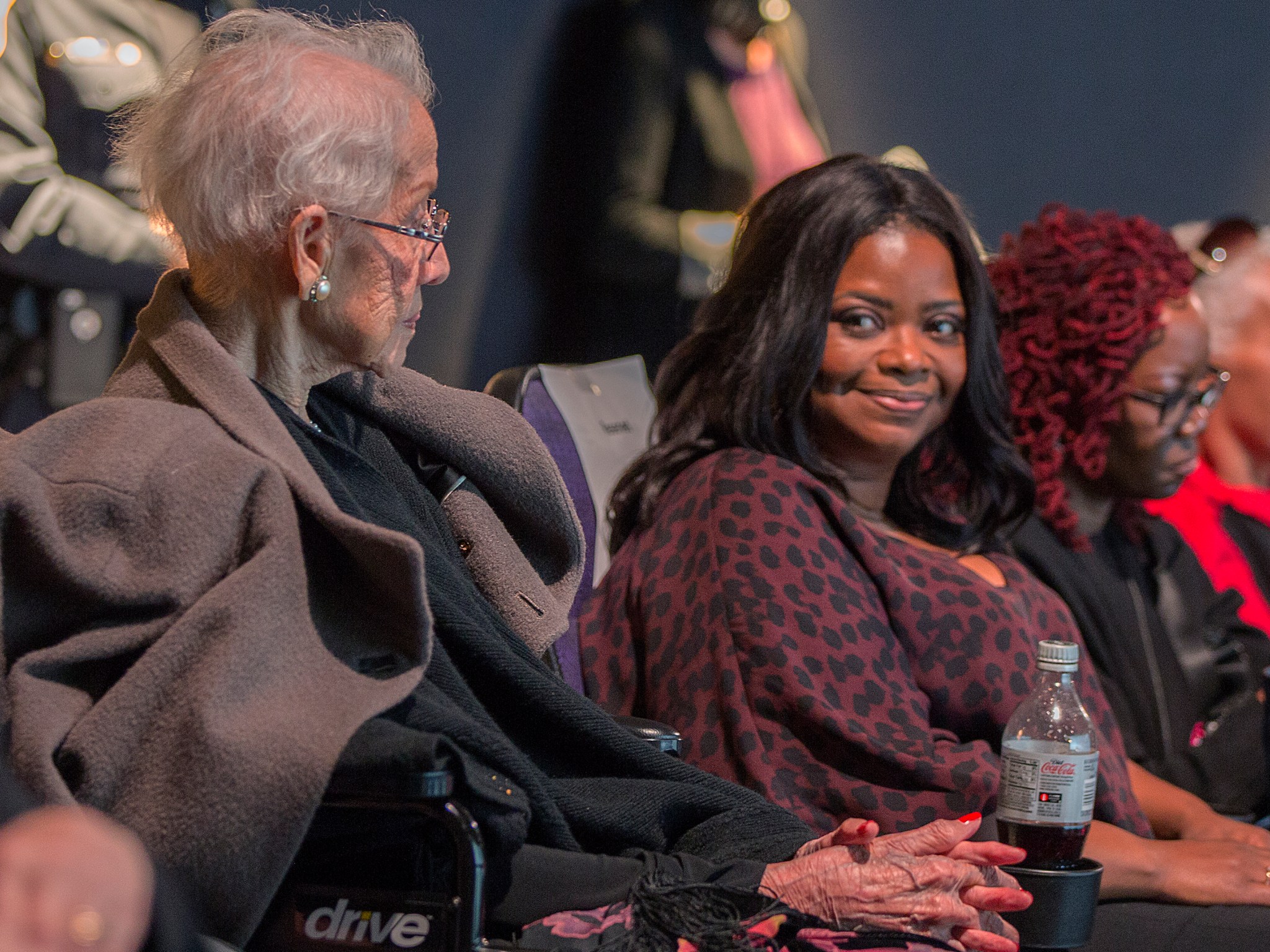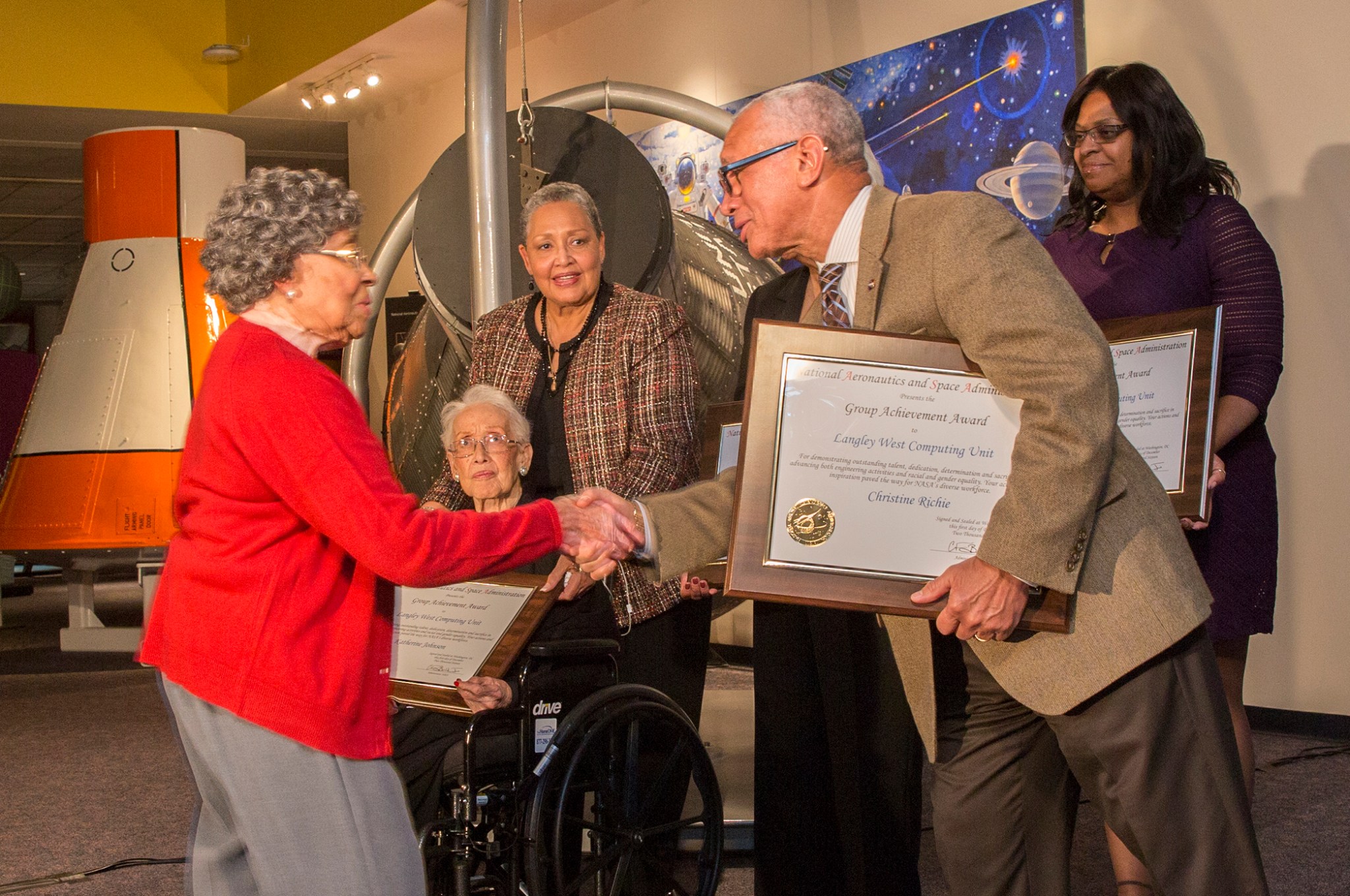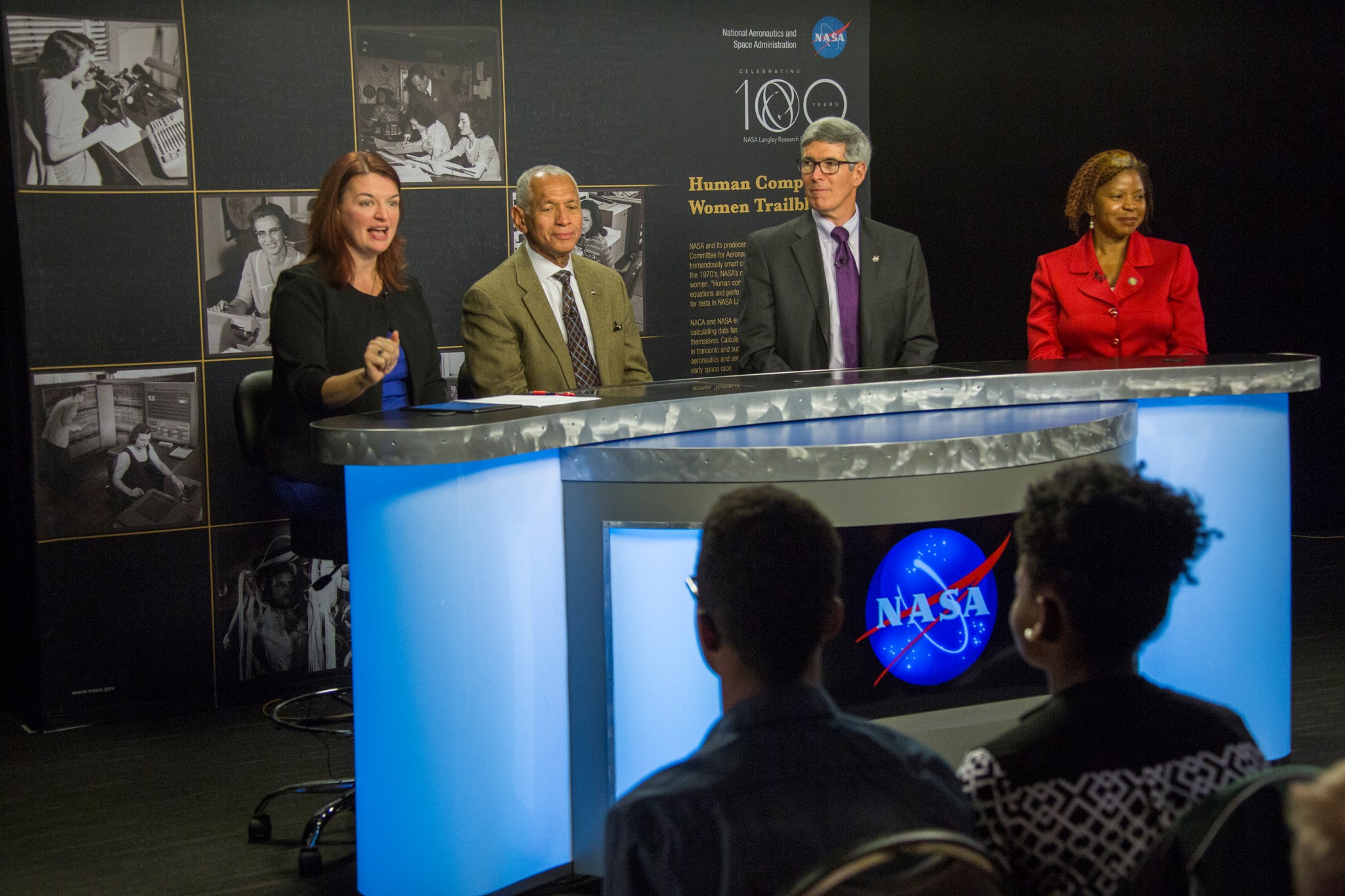Thursday brought a trifecta of excitement to NASA’s Langley Research Center in Hampton, Virginia, with events kicking off the center’s centennial celebration, bidding farewell to exiting NASA Administrator Charlie Bolden and recognizing the upcoming release of “Hidden Figures,” a major motion picture based on the story of the agency’s “human computers.”
Before a private screening of “Hidden Figures” at the nearby Virginia Air & Space Center, Oscar-winning actress Octavia Spencer looked up at the giant IMAX screen with the movie’s title splashed across it.
She smiled and put a hand over her heart.
“Being a part of this movie, I didn’t realize how much this would continue to touch me,” said Spencer, who plays mathematician and manager Dorothy Vaughan in the film.
It chronicles the lives of African-American, female NASA mathematicians who in the 1950s and ’60s struggled against the prejudices of their time to make significant contributions to the nation’s space program. The movie is based on the book of the same name by Margot Lee Shetterly, the daughter of a NASA Langley researcher.
“Katherine Johnson, Mary Jackson, Dorothy Vaughan and all the female computers at NASA who were forward thinking, making changes … their minds impacted the world and certainly changed this country for the better, I think,” Spencer said.
“I hope that ‘Hidden Figures’ will continue to inspire young women, men and women, all across the world to dream big and know that their minds can change the world as well.”
Math heroes
The movie — which also stars, Taraji P. Henson as Katherine Johnson and Janelle Monáe as Mary Jackson — is set to open nationally on Jan. 6 but will be screened locally on Christmas Day.
Thursday’s preview screening was attended by Johnson, a 98-year-old Presidential Medal of Freedom winner who, over her 33-year career at NASA Langley, made many important contributions. As dramatized in the film, Johnson’s computations were key to early space missions including John Glenn’s famous 1962 flight of Friendship 7, the first crewed orbital mission by the United States.
The screening was also attended by Christine Richie, another mathematician who labored in the same West Area Computers Unit where Johnson worked. Family members of the deceased Jackson and Vaughan were also on hand to see their relatives portrayed on the silver screen.
Before the film played, NASA Administrator Bolden honored them with the agency’s Group Achievement Award. “For demonstrating outstanding talent, dedication, determination and sacrifice in advancing both engineering activities and racial and gender equality,” the inscription read. “Your actions and inspiration paved the way for NASA’s diverse workforce.”
Bolden, who is set to step down in the new year, said presenting the awards ranked among the most special things he’s done while leading the agency.
“The reason is very simple. It’s my three granddaughters,” he said. “It’s not lost on me that the reason I’m able to stand here as the first African-American NASA administrator working for the first African-American president is because I’m standing on the shoulders of all the brilliant, dedicated, trailblazing overlooked pioneers who served as human computers.”
They serve as role models for his granddaughters, Bolden said. “They represent what is possible with guts, determination and an indomitable spirit.”
Birthday kickoff
Earlier in the day at NASA Langley, rank and file turned out to hear Bolden speak during what’s likely to be his final visit to the center as administrator.
Bolden recognized recent Langley accomplishments and helped kick off the center’s centennial celebration, which will peak with a series of events in 2017.
“When I come to Langley, I’m always reminded of our heritage,” Bolden said. “It was the work at Langley and the NACA (National Advisory Committee for Aeronautics) that helped us break the sound barrier and do everything that prepared us to send humans to space.” He noted that the roots of almost every NASA center can be traced to Langley.
America’s original astronauts, the Mercury seven, traveled there to start their training.
“So, you guys have played a critical role in everything that NASA’s done,” Bolden said. “And celebrating a 100th anniversary is a big deal. I’m glad that we’re all part of the centennial celebration for the mother center of NASA.”
NASA Langley began life as the NACA’s Langley Memorial Aeronautical Laboratory in 1917, around the same time that neighboring Langley Air Force Base was founded. The Air Force facility marked its 100th birthday in 2016. And on Thursday, Col. Caroline Miller, commander of Joint Base Langley-Eustis, in essence, passed the centennial celebration torch to NASA Langley’s director, David Bowles.
“We have a great partnership,” Bowles said told Miller. “We’re honored to share a fence line with you.”
Figuring the future
Thursday’s festivities began with an event that looked toward the future of both NASA and the nation.
A Digital Learning Network panel discussion took historical topics covered in the film “Hidden Figures” and made them relevant to young people in schools around the country.
The movie’s director, Ted Melfi — connected to Langley through a video feed — answered questions posed by students from Hampton’s Bethel High School as well as from others watching the broadcast across the nation.
Joining Melfi was a panel that included Administrator Bolden; Bill Barry, NASA’s chief historian; and Julie Williams-Byrd, a senior systems analyst at NASA Langley who sees herself as following in the footsteps of pioneering figures like Langley’s human computers.
“I thought it was cool,” said 17-year-old Evin Christie. He said he found the advice of Williams-Byrd particularly inspiring. “Always be confident in yourself,” he said. “Believe in yourself and don’t listen to the naysayers.”
Williams-Byrd said that Katherine Johnson tried to help others follow the trail she had helped to blaze.
“She was always reaching back and always helping people,” Williams-Byrd said. “In order to give her credit and honor her, I do the same thing. Engineering is not easy, but with hard work these students can be anything they want to be.”
- To see more images from NASA Langley events surrounding the centennial kickoff and “Hidden Figures,” visit this photo gallery.































